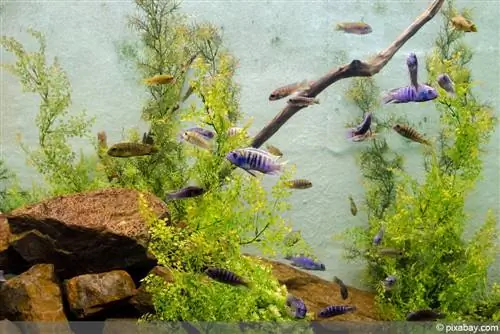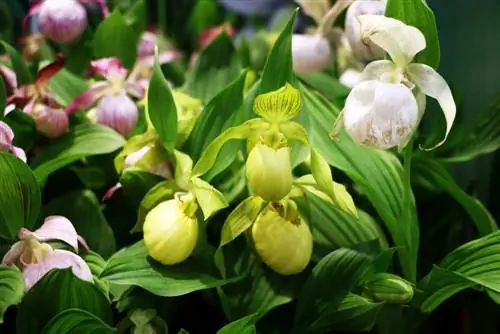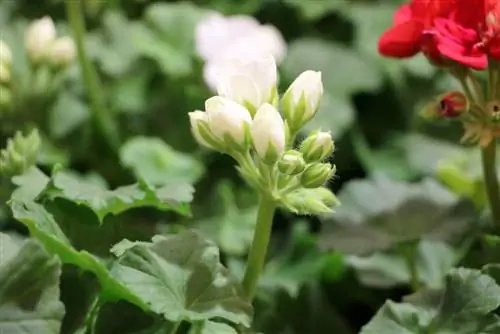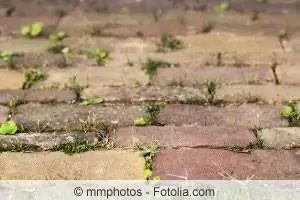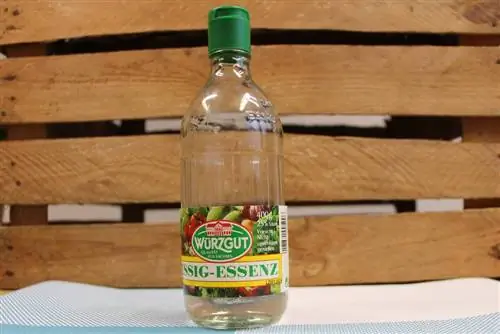- Author admin [email protected].
- Public 2023-12-17 03:39.
- Last modified 2025-06-01 06:48.
It should be remembered that anything you do to change the conditions in the aquarium usually has more than one effect. So something that helps at first can later turn around and do something different. Eliminating one type of algae can encourage the growth of another. It's a cycle and there is no ultimate home remedy for all algae.
Algae always indicates a nutrient imbalance. They live on the nutrients that are not consumed by other “roommates”. Not only does this have disadvantages, it also means that the fish are not receiving too high a dose of macronutrients. Ideal conditions must be created so that the excess nutrients are broken down. The best home remedy is to create, set up, set up and maintain the aquarium so that everything fits together harmoniously. Only one factor that doesn't fit puts everything out of balance. If several people come together, the situation worsens. The algae that are always present take advantage of this. They begin to multiply en masse.
The best remedies for algae
The best means are to create ideal conditions in the aquarium. Chemistry is out of the question, but there are plenty of ways to achieve it. Chemical agents usually only bring short-term improvement. As long as the cause of the algae growth is not eliminated, the algae will keep coming back.
Correct size of the aquarium
Right size of the aquarium Algae are much more common in small tanks. It is therefore better to use a larger one. Of course, the size depends on the trim. Small fish require less space than large ones. Beginners should start with 100 liters and easy to keep fish. Anyone who discovers this hobby will quickly need a larger tank and this usually increases over the years.
Correct location
The aquarium should be placed in a bright place, but not in a sunny place. Too much sun promotes algae growth, at least in many species. Diatoms, on the other hand, grow better in less light.
Good water quality
Test drinking water, specifically which nutrients it contains. There are test sets available in stores for this.
Suitable light
Light determines the nutrient consumption of plants. The more light there is in the tank, the more nutrients are created. If there is too much light, the plants will not be able to use it up. If there is too little light, the plants will grow poorly and will certainly not make it. Algae benefit from the excess supply. Light must be reduced, whether daylight or artificial light. More than 12 hours of light is unfavorable, 10 hours is usually enough.
Filter
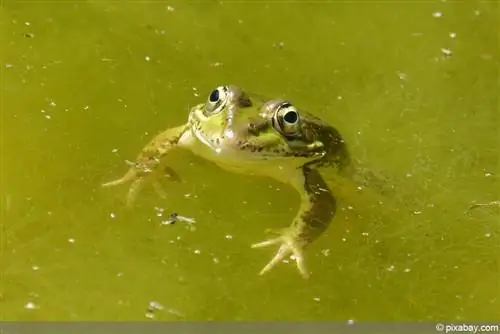
Because an aquarium is too small, it has no self-cleaning ability. Pollutants are not broken down and nutrient consumption is regulated. Biological balance cannot be achieved on its own. Filter systems can help. A single filter is rarely enough. It is better to have two filter systems, a biological filter and a mechanical filter. Biological filtering works with millions of microorganisms. With mechanical filters, water is freed of coarse and fine dirt particles, i.e. feces and leftover food. There are also lots of other filters. It is best to seek advice from a professional about filtering.
Flooring
Depending on what the aquarium floor is covered with, algae may or may not like it. Blue-green algae prefer to colonize white or light-colored pebbles. If you swap them for dark ones, the blue-green algae usually disappear.
Plants
An aquarium cannot accommodate enough plants. The more you have in it, the better it is. Plants use nutrients, the more they use, the less there is for the algae. Algae and plants are competitors for food. The fewer plants use nutrients, the more algae there is. Fast-growing plants are favorable, even if they have to be cut back every now and then because they have become too big. The number of plant species is also important. The more different ones, the better. Each plant prefers different nutrients and so they cover a wider range that is consumed. Monoculture is always difficult.
Fish stock
Adjust the quantity and size of fish and other creatures to the size of the tank. Too many fish produce too much feces, too many nutrients. Basically, the larger the aquarium, the easier it is to maintain biological balance, but even a 1,000 liter tank can be overfilled. A certain number of algae eaters is beneficial. These include freshwater crabs, antennal catfish, Amano shrimp (only eat brush algae)
Sufficient CO2
Plants need enough CO2 as a basis for nutrition and growth. Oxygen is created during photosynthesis in plants. The creatures in the aquarium need this. If there are many plants in the tank, CO2 is used up quickly, which is why an additional CO2 system makes sense. However, the concentration should not be too high. A CO2 concentration that is too high can be reduced by aerating the aquarium using an air stone with an air pump.
Food quantity
Too much is often fed. The leftover food falls to the ground, remains there and decomposes. Nutrients are released. Anything the fish didn't eat within the first 10 minutes of feeding is too much. Therefore, when algae are infested, it often helps to reduce the amount of food.
Fertilization
Why fertilize when there are already too many nutrients? The available macronutrients are often not enough for the plants. You also need micronutrients. They have to be supplied, but carefully. There is a special concentration of nutrients in an aquarium. Some nutrients are present in excess and some are used up quickly or are missing completely. Good fertilizer must specifically compensate for the gaps. To do this, however, you have to know your water values.
Cleaning
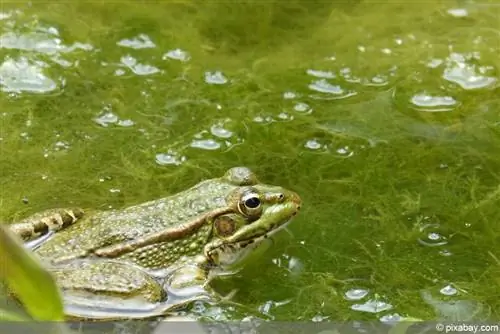
Algae can be removed quite easily manually. With filamentous algae, all you need to do is poke through the water with an unpainted stick; the algae get stuck and wrap around it when you change direction. Many algae can be easily wiped off from plants, windows and objects. The bottom can be vacuumed and any algae it contains will be flushed out.
Water change
The scholars argue when changing the water. Some people swear by removing water weekly (25 to 50 percent) if problems arise, while others strongly advise against it. The only thing that helps here is to try it out. It certainly depends on the composition of the water. Not all drinking water is the same, there are stark differences. Depending on the ingredients, changing the water may or may not help and may even make the situation worse.
Alleged home remedies
Of course, there are always tips on how to fight algae that are declared as home remedies. Often they are only intended to boost sales and don't really achieve anything. However, everyone has to form their own opinion. Trying is better than studying and sometimes necessity is the mother of invention.
- Pieces of granite, slate and bas alt in the water, as decoration so to speak, are intended to prevent algae growth. Experienced aquarium owners laugh at this. The stones make the water harder. Some algae don't tolerate this well, but neither do fish and plants.
- Copper-plated flower water is intended to prevent algae formation. Small euro coins in the water protect flower stems from putrefactive bacteria and algae. However, even small amounts of copper are toxic to fish. What works in a flower vase cannot be transferred to an aquarium, at least not to a populated one.
- Aspirin tablets - 1 tablet per 100 liters of water, is said to combat brush algae, and supposedly other algae as well. There are some reports that aspirin is credited with helping. But just as many report exactly the opposite. The only thing that helps here is to try it out again, but always keep in mind: “Ask your person about risks and side effects” Aspirin is a typical example of: “Everything has its two sides” Filter bacteria are also eliminated.
- Straw extract - “pack well-dried barley or wheat straw (4 to 5 handfuls per 100 liters of water) into a very perforated plastic bag, tie it up and hang it in the aquarium. “The cloudiness probably doesn't last long, the effect should start after 2 to 3 days. It is important to vacuum the algae and change the water. The straw needs to be replaced every 10 days. This method works pretty well in ponds. It can work in the aquarium. There is one disadvantage, the bag is not exactly a visual highlight and the bigger the tank, the bigger the bag.
Conclusion
If you create optimal conditions, you will have few problems with algae. They cannot be avoided completely, and it is not even necessary. Even the ultimate aquarium can introduce algae. It is important that they do not multiply too much. This is best achieved through the measures listed above. Real home remedies are rare. There is a lot of experimentation going on and numerous remedies seem to help at first glance, but they all have side effects. In one way or another, these little remedies take revenge. It is better to make sure that the water is in order, that the plants and fish are he althy, that the water is cleaned regularly and that the water is changed, that there are not too many fish in the tank, but there are numerous plants, that there is not too much feeding and that the filters work. All of this combined ensures a well-functioning aquarium.

